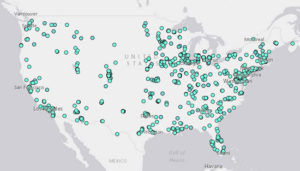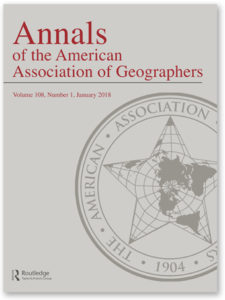AAG at the Forefront of Geography Education Change

I will keep this column relatively brief because I want you to read a companion piece by Michael Solem, Director of Educational Research and Programs for AAG. In my August column I identified eight actions that I see as key to healthy geography departments: teach, promote, build, innovate, nurture, manage, reflect, and envision. In my September column I wrote about the essential need for us to teach effectively. Since then, an article published in the New York Times Sunday Review summarized research on the positive effects of active learning (defined as “…increased structure, feedback, and interaction prompting students to become participants in constructing their own knowledge rather than passive recipients.”). This article, engagingly entitled “Are College Lectures Unfair?” generated a fair amount of buzz and comment from the public and from my geography friends on Facebook and other social media. People care about good teaching. In a time when higher education is under close scrutiny, this is important to remember. It is good to reflect on one’s teaching practices, in both undergraduate and graduate courses, and try new strategies. It is also important to communicate clearly with our constituencies that we do care about our teaching as much as our research. It is part of promoting ourselves.
And promotion is the theme of this column—and many more to come. I want to begin a conversation about ways to promote our discipline. It is not likely that we will see an editorial like this that appeared in The Guardian on August 13, 2015 in the United States. It calls geography, “a subject for our times” and presents a rich and nuanced description of the range of things geographers do, noting particularly, our employability. So we need to start the buzz on our own. Linking employability with cool spatial technologies may catch the attention of the public.
AAG is leading two initiatives to promote geography at the intersection of geospatial technologies and education. The first is the AAG GeoMentors Program. The program, a partnership with Esri, creates a network of knowledgeable GIS users and educators to support the White House’s ConnectED Initiative. The overall goal of ConnectEd is to provide every school in the United States with high speed wireless connections and new technologies to enhance learning. To support ConnectED, Esri is donating ArcGIS Online access to all K-12 schools in the United States. But teachers and curriculum supervisors need support to integrate this powerful geographic tool into the classroom. GeoMentors volunteer to provide this support, working with their community’s schools. Doug Richardson, AAG Executive Director, has written a series of four columns for ArcNews outlining the GeoMentor Program and encouraging geographers and others to “Give Back” by helping to mentor the next generation of geographically literate citizens. As Doug and AAG project manager Candice Luebbering have pointed out, this program is flexible.

As a GeoMentor you may advocate for inclusion of GIS and related geographic concepts in science and social science curricula in your local schools by speaking at a School Board meeting or working face-to-face with a team of teachers and their students on a field-based project using GPS and GIS technologies. The program will provide support and educational resources so you can learn from other GeoMentors and program facilitators. Please consider adding your expertise in geography to promote this effort and our discipline. To become a GeoMentor, go to http://geomentors.net.
The second initiative to promote geography is a Geography Education National Implementation Project (GENIP)-funded initiative to develop an Advanced Placement® Geographic Information Science and Technology (GIS&T) course. Advanced Placement® Human Geography (which I have written about before) is a huge success story. Last year more than 163,000 students took the course and the exam; about half scored well enough to get college credit. They will be coming to your institutions in the next few years seeking additional geography classes. College Board is very interested in expanding its offerings from traditional topics such as Chemistry, English, and United States History and moving into more technical fields. Next year, a new AP® course, Computer Science Principles, will launch. An offering in Engineering is under consideration. Certainly a GIS&T course would be a brilliant way to promote geography. Michael Solem’s article presents the case and outlines the first steps taken in this direction. Please read it.
My last thought: this initiative illustrates the way AAG is taking an active (and proactive) role to promote geography. I look forward to hearing from you about ways you are promoting geography in your institution or community and ways you think AAG as an organization can assist.


